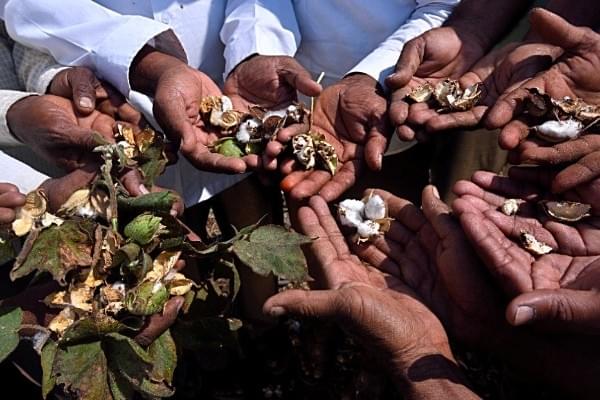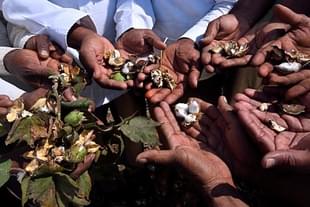Insta
Pink Bollworms Surface Early On Cotton Plants In Telangana, Trigger Panic
Swarajya Staff
Sep 18, 2018, 06:03 PM | Updated 06:03 PM IST
Save & read from anywhere!
Bookmark stories for easy access on any device or the Swarajya app.


Panic has gripped cotton farmers in Telangana state with incidences of pink bollworm affecting the crop within the first 30 days of the start of the Kharif season, reports Business Line.
Being one of the major cotton producing states, the outbreak has made agricultural scientists and farmers apprehensive of the crop. Scientists consider the early disease as mystifying, as they were expecting a pest attack during November-December.
Proximity of cotton fields to ginning mills is seen as the primary reason for the early incidences of bollworm attacks. The mills are a point source for bollworms which are generated from cotton stocks procured from farmers in the previous season, said Prof Jayashankar of Telangana State Agricultural University.
The second reason is the extension of harvest beyond December. Usually, farmers are advised not to keep the crop beyond December.
The third reason was the delay in deep ploughing the field. The field is ploughed after the harvest and farmers are asked to sow pulses to prevent regeneration of the bollworm. Jayasankar says that the farmers waited for the rains to plough their field instead of sowing pulses like green gram.
Bollworms tide over winter in the field and re-infest the following season. Experts believe that farmers can prevent the infestation by natural pest management methods and using pheromone traps. Bollworms are also controlled through mating disruption, chemicals, and releases of sterile males which mate with the females but fail to fertilise their eggs.




